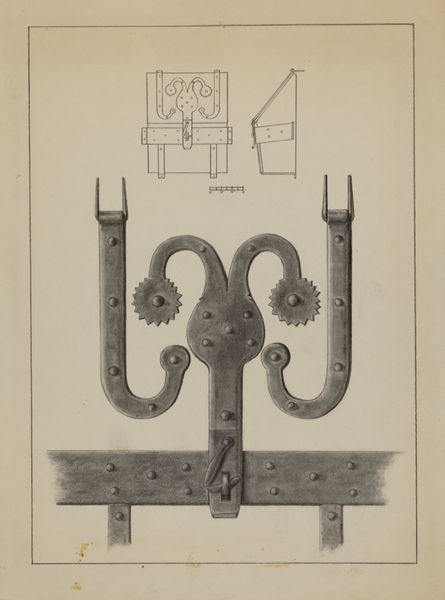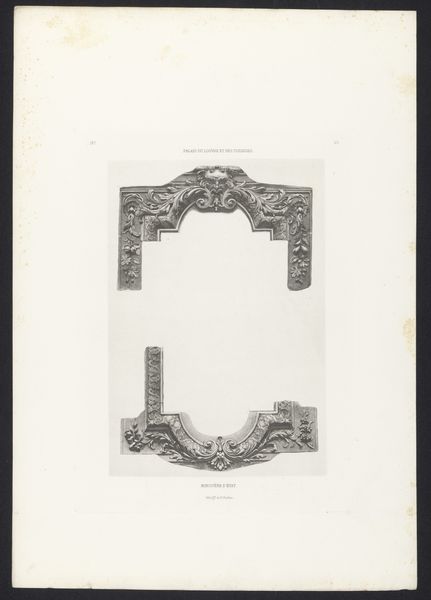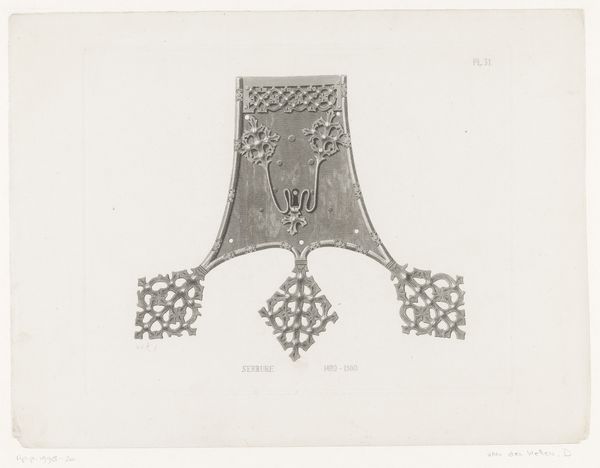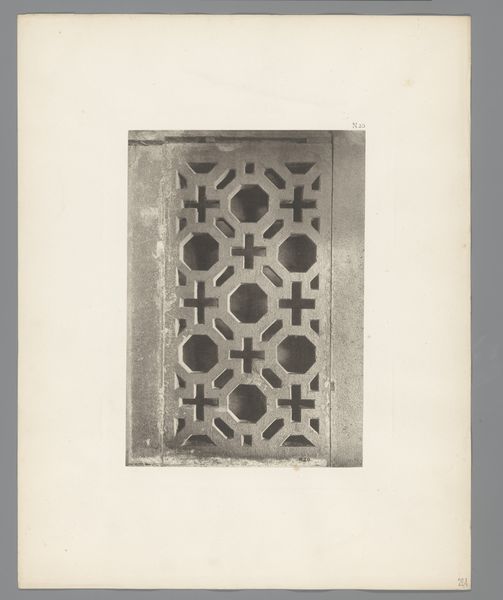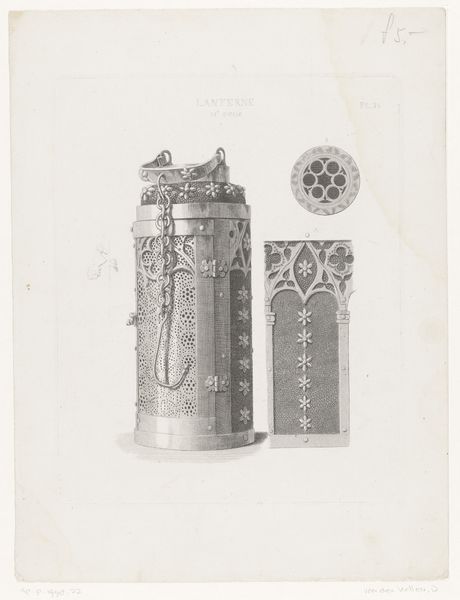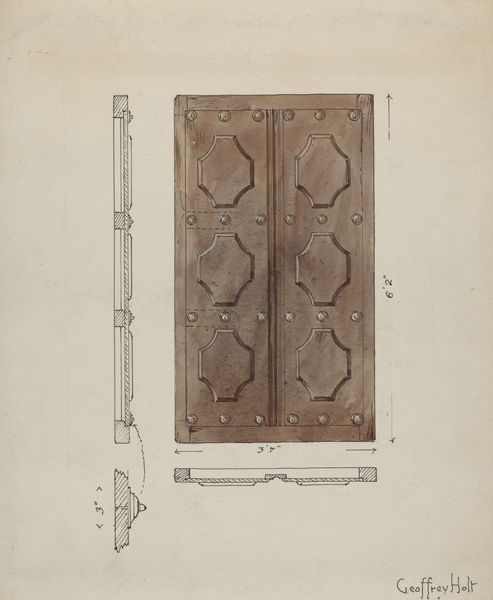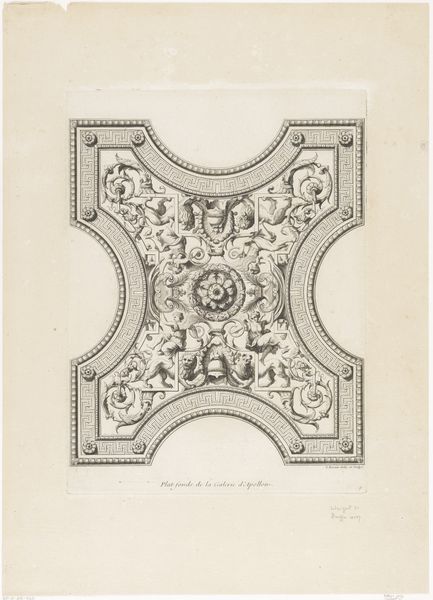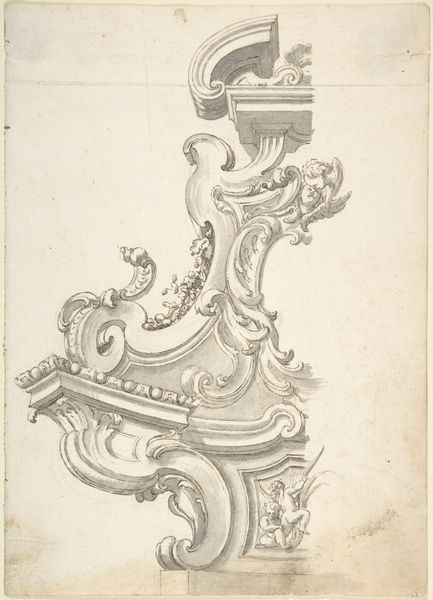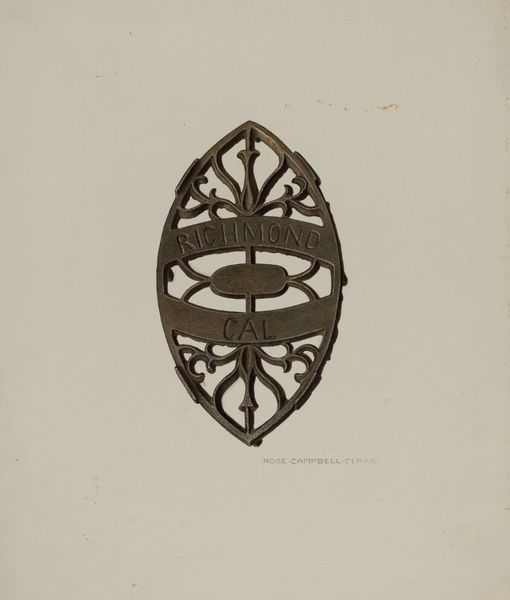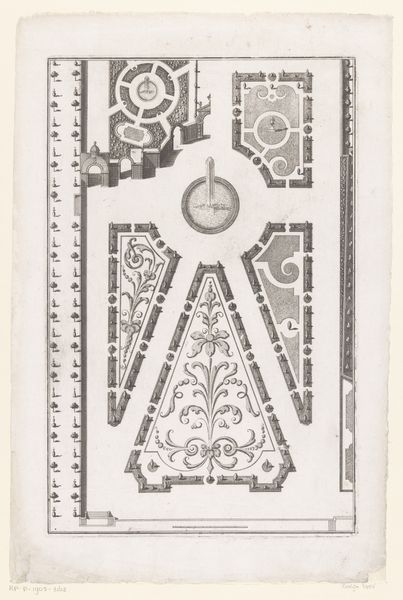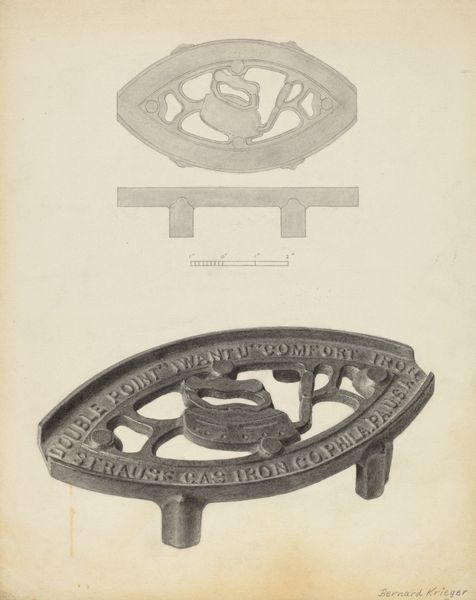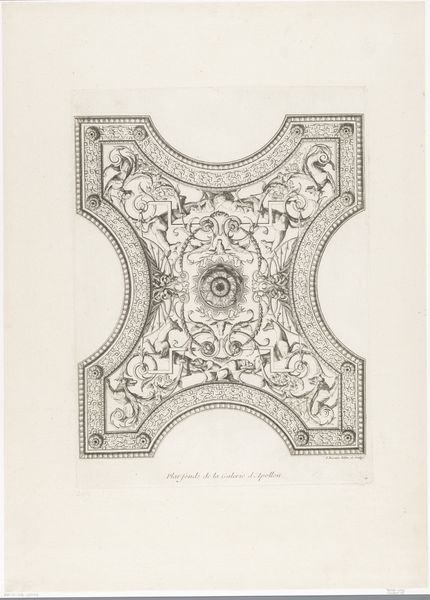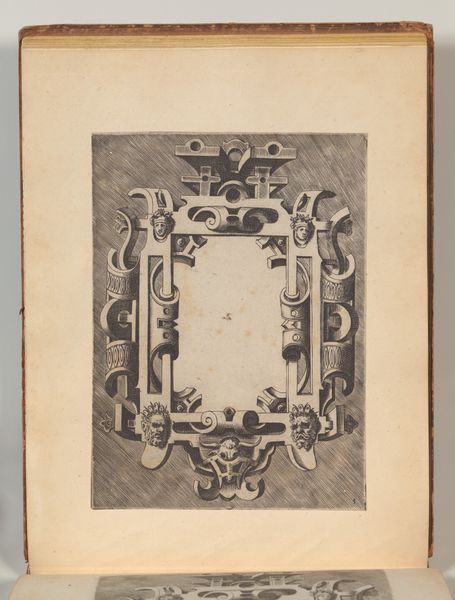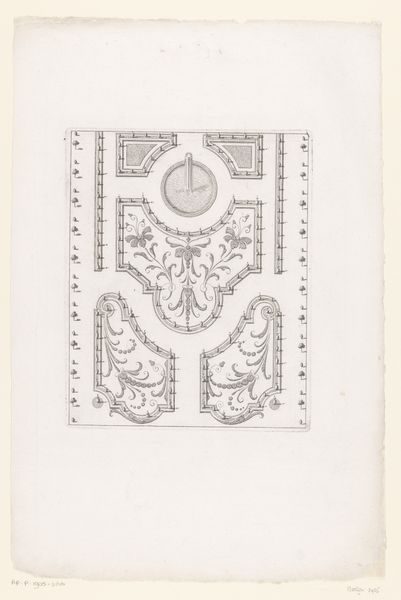
Dimensions: height 264 mm, width 216 mm
Copyright: Rijks Museum: Open Domain
David van der Kellen created this drawing of a lock, using graphite, around 1860. The sinuous, vegetal motifs that adorn the escutcheon are not merely decorative; they speak to a deeper human impulse, an age-old fascination with nature's vitality. These flowing tendrils and stylized leaves, while reminiscent of the acanthus scrolls seen in classical art, echo the protective and life-affirming qualities often attributed to nature. From ancient Egyptian amulets depicting flora to the sacred groves of the Celts, plants have long been symbols of growth, regeneration, and the cyclical nature of life. Think of the 'horror vacui,' the fear of empty space that drove artists across cultures to fill every surface with intricate patterns. These motifs resurface, re-coded with new meaning, reflecting our subconscious desire to ward off emptiness and chaos, replacing them with the comforting rhythm of the natural world. Such patterns aren't merely aesthetic choices; they are echoes of our collective memory, of a primal connection to the earth that continues to resonate within us.
Comments
No comments
Be the first to comment and join the conversation on the ultimate creative platform.
